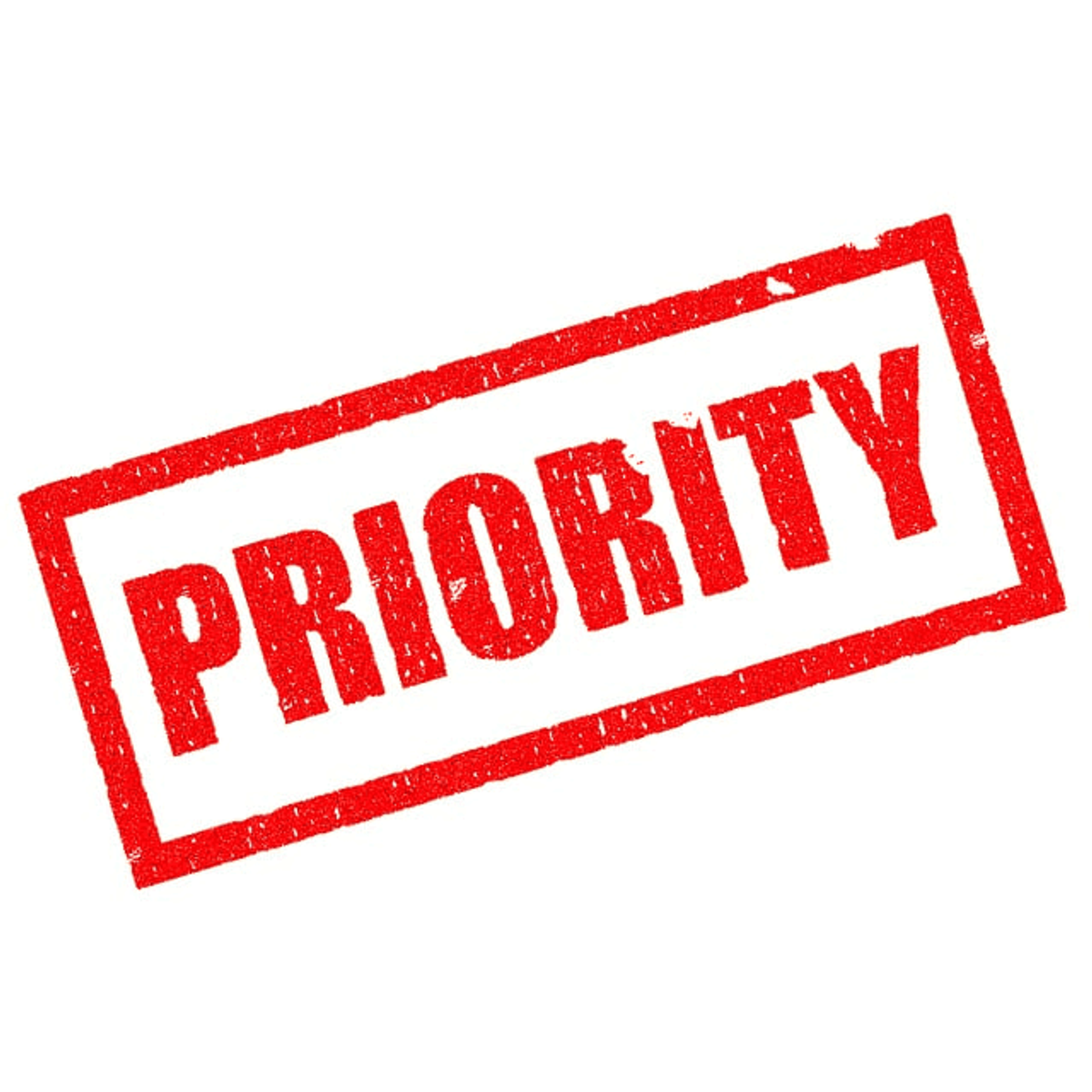What is Brand Marketing? A Guide on How to Master Online Brand Marketing Strategy

Brand marketing has become the cornerstone of success for businesses. It's the art and science of creating a recognizable identity and emotional connection with your target audience. In this guide, we will explore the intricacies of brand marketing and how to excel in this field.
Quick Summary
Brand marketing is essential for business success, creating emotional connections with audiences in a competitive landscape. It emphasizes clarity in brand identity, consistency across channels, and connection with consumers. Unlike traditional marketing focused on immediate sales, brand marketing fosters long-term loyalty through storytelling and visual identity. As technology evolves, incorporating digital strategies alongside offline methods enhances brand presence. Successful brand marketers
As consumers are bombarded with choices in the digital age, standing out has never been more critical. Brand marketing strategy, anchored in brand equity and strong brand guidelines, is your beacon in this vast sea of competition. Effective brand marketing strategy is not just about telling a story; it's about crafting a narrative that resonates deeply with individuals, whether it's about personal brands, worldwide brands, or product brands.
Understanding the intersection of branding and marketing is critical. It's about consistently delivering on your brand promise, aligning with your brand's vision, and sharing your brand story authentically. Successful brand marketing isn't a one-time effort; it's a long-term strategy that nurtures your brand vision and purpose and creates strong branding that endures. It's also about leveraging visual identity, ad campaigns, and social media posts to amplify your presence.
Ready to Grow Your Business?
Get a free consultation and custom strategy tailored to your goals.
Whether you're looking to create a brand from scratch or refine your existing one, grasping the importance of branding and selecting the right business name is essential. Where the little things matter, these nuances of branding can make all the difference in forging lasting connections with your audience.
The Importance of Brand Marketing

Brand marketing has always been crucial, but nowadays, its significance for top global brands has reached new heights. Many marketing channels and opportunities make it both an exciting and challenging era for brand marketers.
With exemplary marketing efforts, you can foster brand loyalty, strengthen brand equity, and ensure your brand resonates with your target audience, which can translate into long-term success, as loyal customers are more likely to stay engaged with your products or services and even pay a premium for the experience.
What is Brand Marketing?
Brand marketing encompasses a set of strategies and tactics aimed at creating a distinct and memorable brand identity. It involves everything from your logo design and brand colors to your messaging in your marketing materials.
How Brand Marketing Differs from Traditional Marketing
While traditional marketing predominantly centers on promoting a product or service, brand marketing ventures far beyond such confines. It is the art of establishing a profound connection with your audience by narrating your particular brand name's story and highlighting its core values. It isn't merely about making sales but cultivating enduring relationships.
Traditional marketing often emphasizes short-term gains and immediate sales. It involves tactics like product promotion, discounts, and direct selling. In contrast, brand marketing takes a more holistic and long-term view. Building a solid brand and reputation requires consistency, authenticity, and a deep understanding of the audience. It takes ongoing effort to achieve success.
The focus is on creating a strong brand marketing, that personally resonates with your target audience. It's about building trust and loyalty so customers choose your products or services and advocate for your brand.
The 3 C's of Brand Marketing
Clarity: Defining Your Brand Identity
Clarity is the first pillar of a strong brand marketing strategy. It involves explaining what your brand stands for, its values, and its unique selling propositions. Clear brand identity in your brand strategy helps customers connect with your brand.
A solid brand strategy begins with defining your brand's identity, ensuring that every aspect reflects this identity, from your visual branding to your brand guidelines.
Consistency: Maintaining a Unified Brand Image
Consistency is crucial in branding. It means that your brand's messaging, visuals, and tone are consistent across all marketing channels. Whether customers interact with your brand on social media, through email marketing, or in-store, they should experience the same tone, values, and personality traits.
This consistency builds trust and reinforces your brand's position in the minds of consumers. It also helps create a recognizable identity that differentiates you from other brands.
Connection: Building Emotional Bonds with Your Audience
The final "C" in brand marketing is connection. Building emotional bonds with your audience is at the heart of successful brand marketing. Customers tend to choose brands that they have an connection with, and this connection goes beyond product features.
Brand marketing aims to create personalized content to connect with the target audience. It's about making your brand a part of their lives and aspirations.
The Four Types of Branding in Marketing
Product Branding
When we think of branding, product branding is often the first thing that comes to mind. It involves how brand marketing focuses on creating a distinct identity for a specific product or line of products. This type of branding focuses on the product's unique features, benefits, and attributes.
In a successful product branding and marketing strategy, companies aim to position their products as the best solution to a particular problem or need within the target market. It often includes creating a strong brand presence through product marketing, advertising, and packaging design.
Corporate Branding
Corporate branding is all about establishing and promoting the brand identity of the entire company. It's not limited to products or services but extends to the overarching image of how brand marketing refers to the organization itself. Corporate branding conveys the company's values, mission, and culture.
When you think of worldwide brands like Apple or Coca-Cola, you think of corporate branding. These brands have built a strong identity that transcends individual products and creates a sense of trust and familiarity with their brand ambassadors and consumers.
Personal Branding
Personal branding has gained significant prominence in recent years, particularly with the rise of social media and influencer marketing. It involves individuals creating a identity for themselves, often as experts or authorities in a particular field.
Successful personal branding can lead to lucrative opportunities, whether becoming a sought-after speaker, consultant, or social media influencer. It's about building a reputation and online presence that aligns with the individual's goals and values.
Service Branding
Service branding focuses on creating a distinct identity for a service-based business. Unlike product branding, which emphasizes tangible goods, service branding revolves around the intangible aspects of service quality, reliability, and customer experience.
Companies offering services, such as consulting firms, healthcare providers, or hospitality businesses, use service branding to communicate their unique approach and commitment to customer satisfaction. Effective service branding can lead to increased customer loyalty and word-of-mouth referrals.
Brand Management Defined
Brand management oversees and maintains consistency and integrity across all touchpoints. It's about ensuring that the brand's identity, values, and messaging align with the company's objectives and resonate with its target audience.
Brand management is critical in marketing because it directly impacts a brand's recognition, reputation, and customer loyalty. It involves making strategic decisions about positioning and promoting the brand effectively.
Responsibilities of a Brand Marketing Manager
A good brand marketing manager is responsible for developing and executing a solid brand marketing strategy. This role involves various vital responsibilities, including:
- Defining the brand's identity and guidelines.
- Creating and implementing brand marketing campaigns.
- Managing brand marketing efforts across different channels.
- Measuring and analyzing the success of the brand marketing strategy.
- Developing brand marketing tactics to engage the target audience.
- Ensuring the company's brand story is consistent and recognizable.
Brand marketing managers are the guardians of the brand's reputation and promise to customers. They work closely with other departments to align marketing efforts with the brand's vision and values.
The Elements of Brand Marketing
Visual Branding: Logos, Colors, and Design
Visual branding is the part of the branding that people see and recognize instantly. It includes elements like your logo, color palette, typography, and overall design aesthetics. These elements should work cohesively to create a visually appealing and memorable brand presence.
Your logo, in particular, is a critical component of visual branding. It serves as the symbol of your brand and should be instantly recognizable and representative of your brand's values and personality.
Storytelling: Crafting a Compelling Brand Narrative

Storytelling is a powerful tool in brand marketing. It involves creating a story that connects with your audience personally. Your brand story should communicate your brand's values, mission, and purpose beyond the features and benefits of your products or services.
A brand story can create an emotional connection with your audience, leading them to choose your brand over competitors.
Online Presence: Leveraging Digital Channels
A robust online presence is crucial for successful brand marketing campaigns and involves leveraging social media, making exciting content, and optimizing your website for search engines.
Social media ads, marketing, and effective brand marketing on digital platforms are essential for reaching a broader audience and staying relevant in a competitive landscape. Online brand marketing allows you to interact with your audience in real time and build meaningful relationships.
Ready to Grow Your Business?
Get a free consultation and custom strategy tailored to your goals.
Brand Marketing Strategies
Online vs. Offline Brand Marketing
The choice between online and offline brand marketing is not an either/or proposition but a strategic balance. Online brand marketing leverages digital channels such as websites, social media, email marketing, and online ads. An online presence helps you connect with people worldwide and allows you to track your performance using data analysis.
On the other hand, offline brand marketing includes traditional methods like print advertising, billboards, television, and radio. While these methods have been around for decades, they can still be effective for specific target audiences and industries.
A successful brand marketing strategy is finding the mix of online and offline tactics to engage your audience effectively.
Leveraging Social Media for Brand Awareness
Social media has revolutionized brand marketing. Direct communication with your audience offers a platform for building brand awareness, engagement, and loyalty. Here are some ways to leverage social media for brand marketing:
- Content Strategy:Develop a content calendar that aligns with your brand's story and values. Consistently create and share content that resonates with your target audience.
- Engagement:Interact with your followers by responding to comments, messages, and mentions. Encourage user-generated content and testimonials.
- Influencer Marketing:Partnering with influencers who share values and goals similar to your brand can help you authentically reach a wider audience.
- Paid Advertising:Social media advertising is a powerful tool that helps you to promote your brand effectively and efficiently. With targeted ads, you can reach specific demographics, interests, and behaviors, all while keeping costs low.
- Analytics:Regularly analyze social media metrics to measure the impact of your brand marketing and make data-driven improvements.
The Power of Brand Marks
Defining Brand Marks and Logos
Brand marks, often synonymous with logos, are visual symbols that represent your brand. They are essential components of brand identity, offering instant recognition to your audience. Practical brand marks convey your brand's personality, values, and purpose concisely and memorably.
Consider color psychology, typography, and symbolism when designing a logo. A well-crafted logo can become an iconic representation of your brand and leave a lasting impression on consumers.
Examples of Iconic Brand Marks
We all recognize iconic brand symbols etched into our collective consciousness. The golden arches of McDonald's, the Nike swoosh, and the apple with a bite taken out of it for Apple Inc. are just a few examples of these powerful emblems that have come to represent worldwide brands.
These symbols have transcended their status as logos to become universally recognized icons.
Studying iconic brand marks can provide valuable insights into the art of visual branding and the role of logos in brand marketing.
Measuring Brand Marketing Success
Key Performance Indicators (KPIs) for Brand Marketing
When measuring the effectiveness of your own brand marketing strategy, it's crucial to define and track key performance indicators (KPIs). KPIs are quantifiable metrics that gauge various aspects of your brand's performance. Some common KPIs for brand marketing include:
- Brand Awareness:Measure the growth in the number of people who recognize your brand.
- Brand Engagement:Track user interactions with your brand, such as media shares, likes, and comments.
- Customer Loyalty:Assess repeat purchases and the retention rate of loyal customers.
- Brand Reputation:Monitor online reviews, ratings, and sentiment toward your brand.
- Brand Recognition:Analyze how often your brand is identified correctly by consumers.
- Brand Equity:Evaluate your brand's perceived value and strength within your industry.
Analytics and Tools for Tracking Brand Performance
Utilize various analytics tools and platforms to measure brand performance. Google Analytics, social media insights, email marketing analytics, and brand sentiment analysis tools can provide valuable data.
By consistently monitoring KPIs and analyzing data, you can refine your brand marketing strategy, make informed decisions, and adapt to changing market conditions.
The Role of Customer Feedback
Collecting and Utilizing Customer Feedback for Brand Improvement
One of the most valuable brand marketing resources is direct customer feedback. Their opinions, suggestions, and experiences can guide your own brand strategy and improvement efforts and help you meet their expectations more effectively.
Engage with your audience through focus groups, surveys, online reviews, and other social media marketing interactions. Act on their feedback to enhance your products, services, and overall brand experience.
The Evolution of Brand Marketing

Brand marketing constantly evolves, and staying ahead of the curve is essential. Some key trends and innovations in online brand marketing include:
- Interactive Content:Engaging your audience through interactive content like quizzes, polls, and augmented reality experiences can create a deeper connection with your brand.
- Video Marketing:Content on video continues to dominate social networks and online platforms. Brands use video to tell their stories, showcase products, and connect personally with their audience.
- Voice Search Optimization:Optimizing brand content for voice search is crucial as voice-activated devices become prevalent.
- Sustainability and Social Responsibility:Consumers increasingly consider environmental and social issues. Brands that embrace sustainability and social responsibility in their marketing efforts can resonate with a more socially aware audience.
Ready to Grow Your Business?
Get a free consultation and custom strategy tailored to your goals.
Challenges in Online Brand Marketing

While online brand marketing offers immense opportunities, it also presents challenges. Some common hurdles include:
- Saturation of Digital Channels:The sheer number of digital channels can be overwhelming. Brands must choose the right platforms to reach their target audience effectively.
- Content Overload:With so much online content, standing out from the crowd can be difficult. Brands must create high-quality, unique content to capture and hold their audience's attention.
- Data Privacy Concerns:As data privacy regulations are strict, brands must navigate the balance between personalized marketing and respecting customer privacy.
- Ad Blocking:The prevalence of ad blockers threatens traditional digital advertising. Brands must find ways to engage audiences without relying solely on paid advertising.
The Future of Brand Marketing
AI, VR, and AR will shape brand marketing's future. These technologies will enable brands to create more immersive and personalized experiences for their audiences.
AI-powered chatbots and personalization algorithms will continue to enhance customer interactions. VR and AR will allow consumers to engage with brands entirely new ways, from virtual product try-ons to immersive brand experiences.
The future also promises more sustainable and ethical brand marketing practices as consumers increasingly demand transparency and responsibility from the brands they support.
How to Become a Brand Marketer
If you're interested in pursuing a career in brand marketing, here are some steps to consider:
- Educational Background:While there's no specific degree requirement, a bachelor's degree in marketing, communications, or a related field can provide a solid foundation. Many brand marketers also pursue master's degrees or certifications in marketing.
- Gain Experience:Internships and entry-level positions in marketing or advertising agencies can help you gain practical experience. Look for opportunities to work on branding projects and campaigns.
- Build a Portfolio:Creating a work portfolio, including branding projects, campaign materials, and relevant marketing initiatives. A strong portfolio can set you apart in the competitive job market.
- Networking:By attending marketing conferences, joining professional organizations, and expanding your network, you can create opportunities for personal and professional growth.
- Stay Informed:Continuous learning is crucial in this dynamic field to stay updated with industry trends and the latest developments in brand marketing.
Recommended Qualifications and Skills
To excel in brand marketing, you should possess a combination of skills and qualities, including:
- Creativity:The aptitude to think creatively and develop innovative marketing strategies is essential.
- Communication:Crafting compelling brand narratives requires strong written and verbal communication skills.
- Analytical Skills:As a marketer, it is crucial to possess the ability to analyze data and derive meaningful insights to make informed decisions.
- Adaptability:Brand marketing constantly evolves, so being adaptable and open to change is crucial.
- Attention to Detail:Ensuring consistency in branding elements and messaging requires a keen eye for detail.
- Project Management:Effective brand marketers often manage multiple projects simultaneously, so organizational skills are vital.
Brand Marketing Campaigns for Small Businesses
Small businesses often face budget constraints but can still succeed with a brand marketing strategy. Here are some strategies for small businesses:
- Focus on Niche Audiences:Smaller companies can thrive by targeting specific, niche markets where they can excel and build strong brand loyalty.
- Leverage Local Marketing:Emphasize your local presence and engage with your local community. Local marketing efforts can be more cost-effective and create a loyal customer base.
- Digital Marketing:To improve their online presence, one should consider investing in cost-effective digital marketing strategies such as content marketing, social networks, and email marketing.
- Collaborate:Consider partnerships or collaborations with local businesses to expand your reach and resources.
- Measure and Adapt:Continuously analyze the effectiveness of your brand marketing efforts and adjust your strategy based on performance data.
Conclusion
Brand marketing is the linchpin of triumph for businesses. It surpasses the realm of all things branding, logos and advertising. Forging a strong bond with your audience, telling your brand's story, and keeping your promises is crucial.
The evolution of branding will continue, adapting to novel technologies and ever-changing consumer expectations. Successful brand marketers must harness creativity, data-driven insights, and an agile mindset to conquer this dynamic landscape.
Whether you're a seasoned brand marketer or a neophyte commencing your expedition, comprehending the intricate intricacies of effective brand marketing strategy, embracing the latest trends, and cherishing customer feedback is pivotal to your prosperity in branding.
As the marketing world evolves, the art of branding remains a timeless and indispensable element of business success.
Ready to Grow Your Business?
Get a free consultation and custom strategy tailored to your goals.